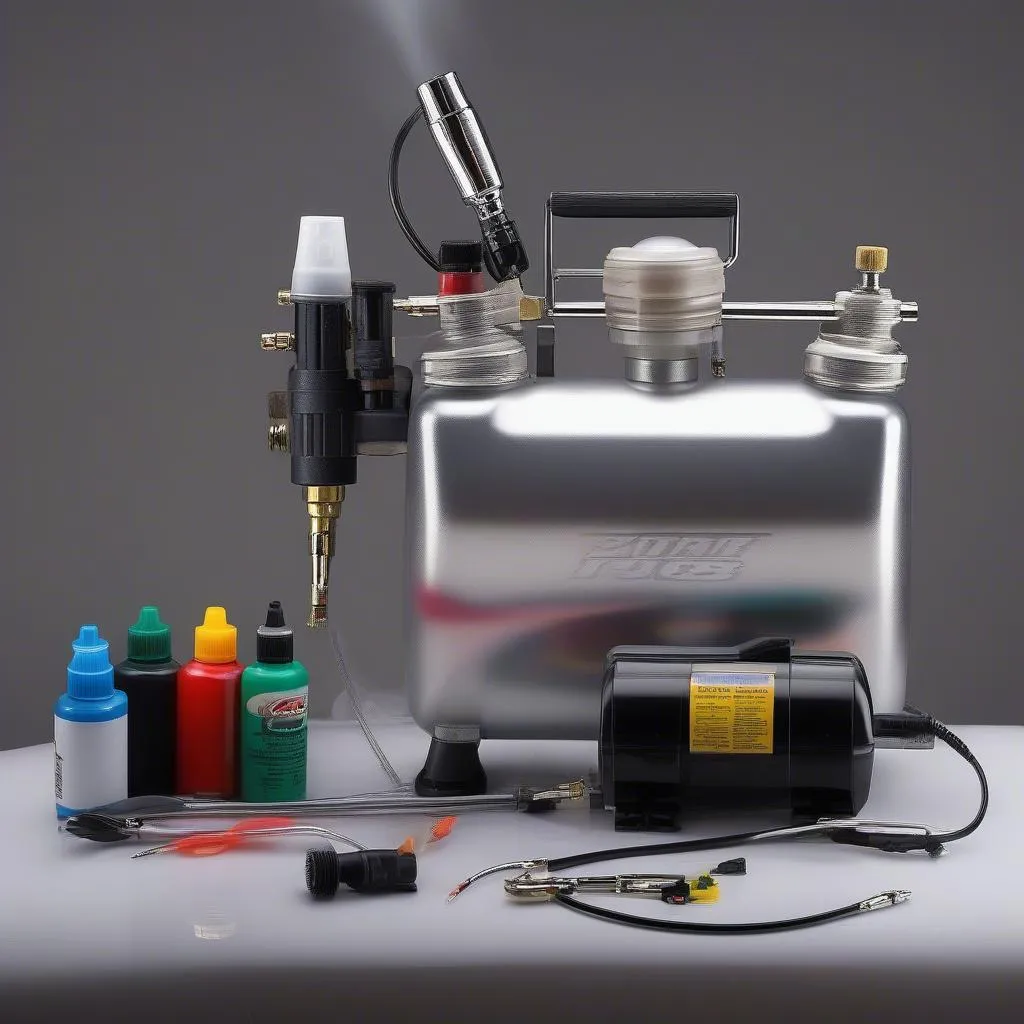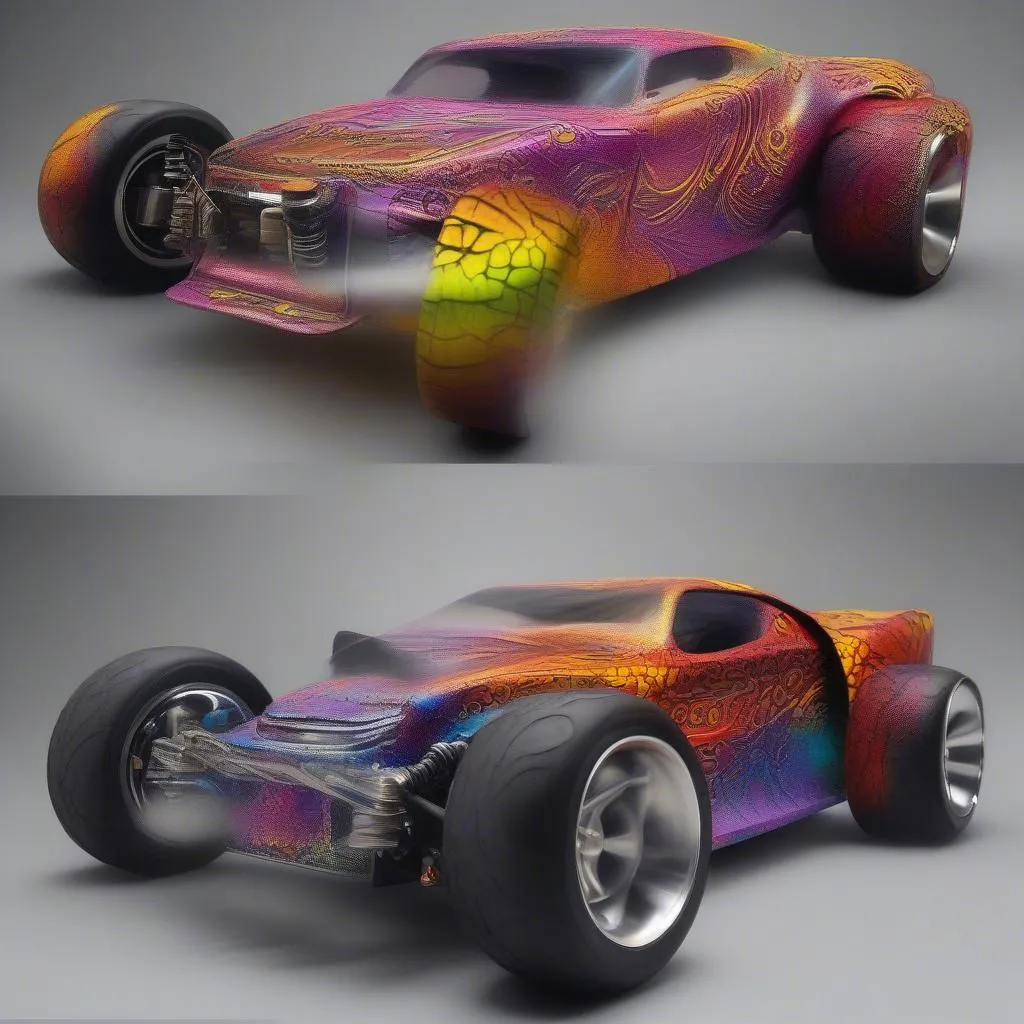Have you ever looked at your RC car and thought, “This is cool, but I can make it even cooler”? Well, you’re not alone. Many RC car enthusiasts love customizing their vehicles with paint, and airbrushing is one of the best ways to achieve that.
Why Airbrush Paint for RC Cars?
Artistry and Precision
Airbrushing allows you to achieve intricate designs and patterns that would be difficult or impossible with a brush. It gives you ultimate control over the paint application, allowing for smooth gradients, fine lines, and even realistic-looking textures.
Versatility and Customization
Airbrushing opens a world of possibilities for customization. You can create unique themes, replicate your favorite car designs, or even add your own artistic flair.
Durability and Protection
When done properly, airbrushing creates a durable and protective finish for your RC car. It can withstand the rigors of off-road racing and protect the underlying materials from scratches, dirt, and wear.
How to Airbrush Paint an RC Car: A Step-by-Step Guide
Step 1: Preparation is Key
Before you grab your airbrush, you need to prepare your RC car for painting.
-
Clean and Degrease: Start by thoroughly cleaning the RC car body with soap and water. Make sure to remove any dirt, grease, or debris that could interfere with the paint adhesion. Use a degreaser to remove any oils or residues that may be left behind.
-
Mask Off Areas: Use masking tape or painter’s tape to protect any areas you don’t want to paint. This could include windows, lights, or parts you want to keep the original color.
-
Prime It Up: Apply a primer to the RC car body. This helps the paint adhere properly and provides a smooth, even surface for painting.
Step 2: Airbrushing Techniques
-
Setting Up Your Airbrush: Choose the appropriate airbrush for your project. Some popular airbrushes for RC cars include Badger 105 and Iwata Eclipse. Ensure the airbrush is clean and properly assembled before starting.
-
Choosing Your Paints: Use high-quality acrylic paints specifically designed for airbrushing. Tamiya and Vallejo are popular brands known for their quality and durability.
-
Practice Makes Perfect: If you’re new to airbrushing, it’s essential to practice on a scrap piece of plastic or wood. This will help you get familiar with the airbrush and different paint application techniques.
-
Thin Your Paints: Thin the paints with an appropriate thinner (often water for acrylics) to achieve the desired consistency. This will ensure smooth, even coverage and prevent clogging.
-
Applying the Paint: Hold the airbrush a safe distance away from the RC car body and use smooth, consistent strokes. Start with a light coat of paint and build up layers gradually.
-
Drying Time: Allow each layer of paint to dry completely before applying the next. This ensures a smooth and durable finish.
Step 3: Final Touches and Sealing
-
Clear Coat: Apply a clear coat over the painted body. This will protect the paint from scratches, dirt, and UV damage. Choose a clear coat designed for durability and resistance to RC car wear and tear.
-
Decals and Detailing: Once the clear coat has dried, you can add decals or other details to customize your RC car even further.
-
Reassembly: Carefully remove the masking tape and reassemble the RC car, taking care not to damage the paint job.
Maintaining Your Airbrushed RC Car
To keep your RC car looking its best, follow these tips:
-
Clean Regularly: Wipe down your RC car after each use with a soft cloth and mild soap. This will help remove any dirt or debris that could damage the paint.
-
Store Properly: Keep your RC car stored in a clean, dry environment when not in use. Avoid storing it in direct sunlight, which can fade the paint.
-
Touch-Ups: If any chips or scratches appear, use the same paint and clear coat to touch up the affected areas.
Frequently Asked Questions
What are the best airbrushes for RC car painting?
As mentioned earlier, the Badger 105 and Iwata Eclipse are popular choices. However, the best airbrush for you will depend on your budget and experience level.
What kind of paint should I use for airbrushing RC cars?
High-quality acrylic paints are ideal for airbrushing RC cars. Brands like Tamiya and Vallejo are known for their quality and durability.
How can I get a smooth, even finish when airbrushing?
Thin your paints properly, practice your techniques, and apply multiple thin coats instead of one thick coat.
How can I protect my airbrushed RC car from scratches and fading?
Applying a durable clear coat will protect your paint job. Store your car properly and avoid exposure to direct sunlight.
Conclusion
Airbrushing your RC car is a great way to unleash your creativity and create a one-of-a-kind vehicle. With the right techniques and care, you can enjoy a stunning, durable finish that will make your RC car stand out from the crowd.
 Airbrush Setup for RC Car Painting
Airbrush Setup for RC Car Painting
 Airbrushing Techniques for RC Cars
Airbrushing Techniques for RC Cars
If you need help with any aspect of airbrushing your RC car, reach out to us. We’re happy to provide guidance and support. Remember, there’s no limit to what you can achieve with a little creativity and the right tools.